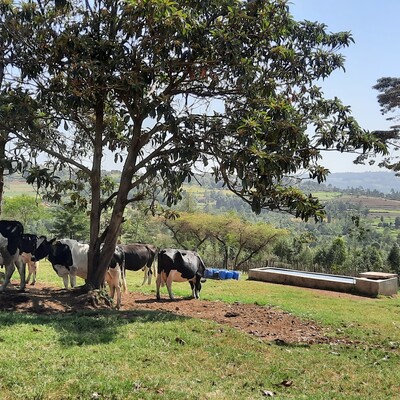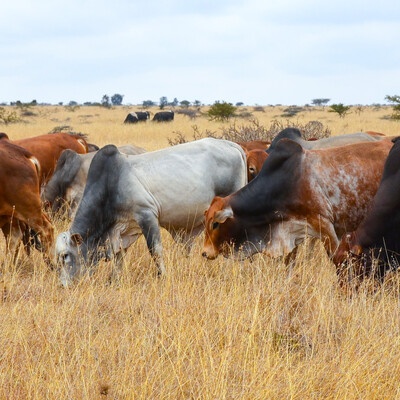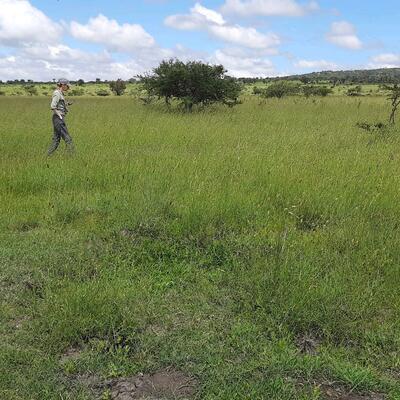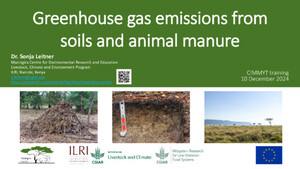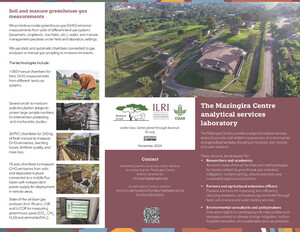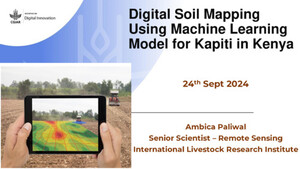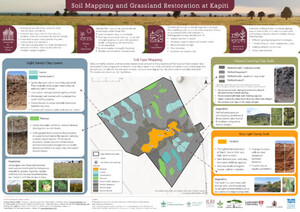

Searching for easy indicators for degraded tropical pastureland soils
Habtamu Sibilu sets a dynamic cone penetrometer upright on a flat patch of grass. He lifts up the weight, drops it, and records how many centimetres into the soil the penetrometer penetrates. After doing this as many times as it takes to reach 20 cm deep into the soil, Sibilu looks over his shoulder to check if the water in his infiltration experiment has drained into the soil. Both of these experiments sit next to a soil pit 50 cm deep, where he’s taking soil samples at different depths to measure bulk density, soil aggregate stability and chemical and physical properties of the soils.
Sibilu is a PhD student at the Technical University of Munich who is co-supervised by Sonja Leitner, senior scientist at ILRI, Mariana Rufino, professor at the Technical University of Munich, and John Quinton, Professor at Lancaster University. He is investigating soil physical indicators that will indicate if soils in western Kenya are degraded and which are not.
All of his experiments have an interconnected goal: to find a method that is easy for other researchers and the community to use, and accessible to set up.
What’s the missing information?
There’s a lack of research in grasslands and how to identify degraded soils, or to protect them. Biological differences between ‘good’ and “poor” soils are also hard to see.
‘Research on soil health indicators such as penetration rate have been conducted in other places, but there have been very few experiments in tropical soils. The soils in western Kenya are millions of years old while soils in Europe are 10-20 thousand, how they become degraded will differ greatly!’ said Leitner.
Lab-based chemical and biological analysis methods are inaccessible, time consuming and expensive for communities to use. Methods must also be specifically tailored to the very old and clay filled soils in western Kenya.
Soil matters for the people, plants and animals who depend on it. For instance, if water doesn’t infiltrate well, it results in limited water availability for plants and runoff can also lead to erosion and loss of soil nutrients.
What we’re doing
Sibilu is looking at three physical factors that could indicate soil health:
- Soil water infiltration rate: measuring how fast a volume of water moves through saturated soils in a given amount of time (mm/hr)
- Soil resistance or compaction: measuring the resistance of soils to a known force to identify how compacted the soils are
- Soil aggregate stability: measuring the resistance of soil particles be dispersed by external forces such as rain
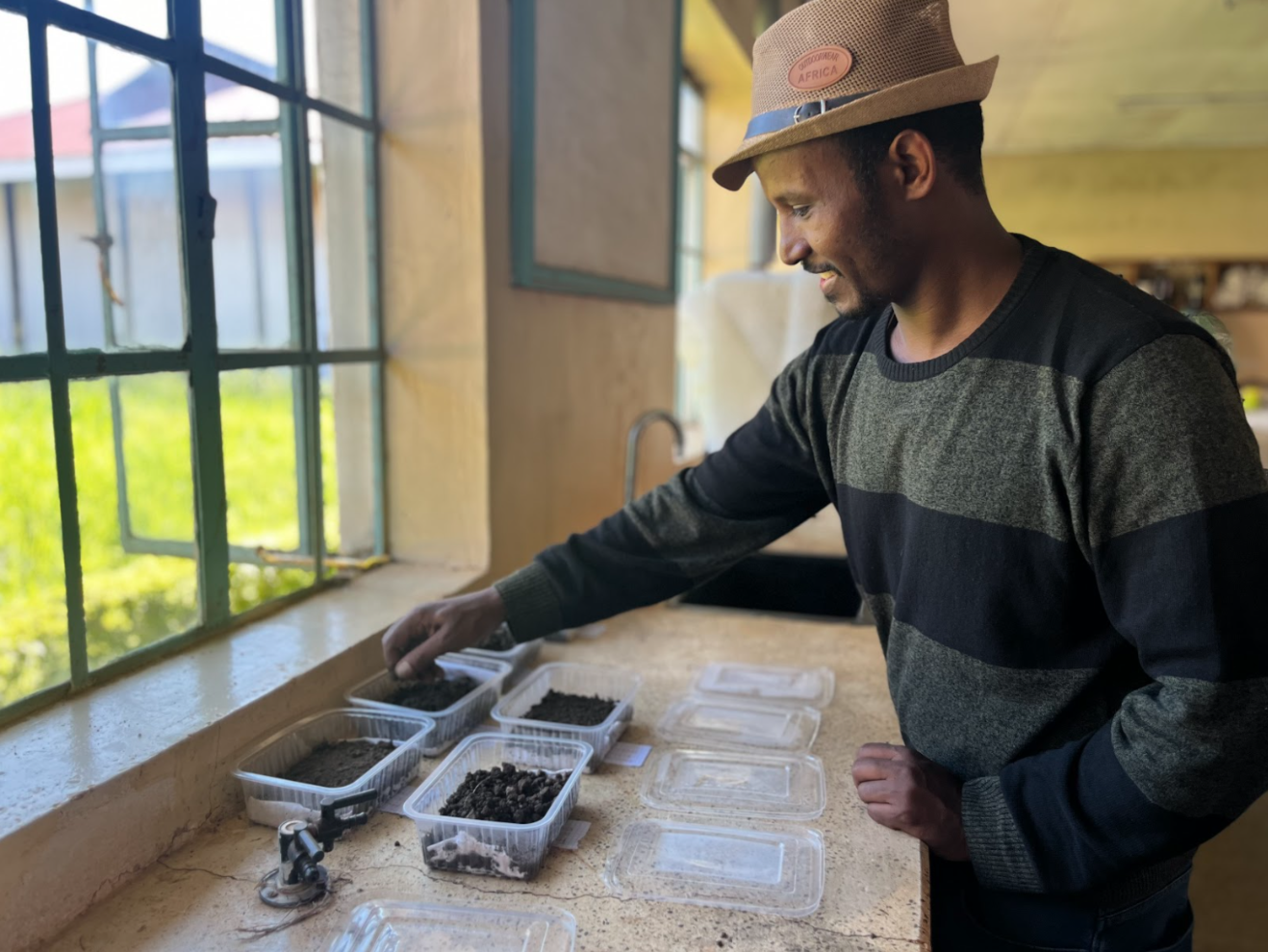
These properties can reveal water-holding capacity of soils, how porous soil particles are, and the ability of soil aggregates to resist easy breakdown when they are subjected to external disturbances including rainfall, therefore indicating whether the soil is degraded or not. Sibilu is testing his methodology on 20 farms: 5 with good soil (at equilibrium state), 5 with degraded soils and 5 each in two contrasting sites: Nyando and Kuresoi to see if there are any differences in different types of soils and environments.
‘My field work is on soil infiltration rate and the compaction test is progressing well. So far, from observations, water is not infiltrating as we expected. This could be due to soil hydrophobicity, hinting us to consider conducting another water repellency test. In terms of compaction I’ve noticed that soil is not as resistant to the penetrometer as I had anticipated. This could be because it’s currently raining and soil is moist. I am excited to analyze data further and see if my observations hold true,’ said Sibilu.
Why Kericho
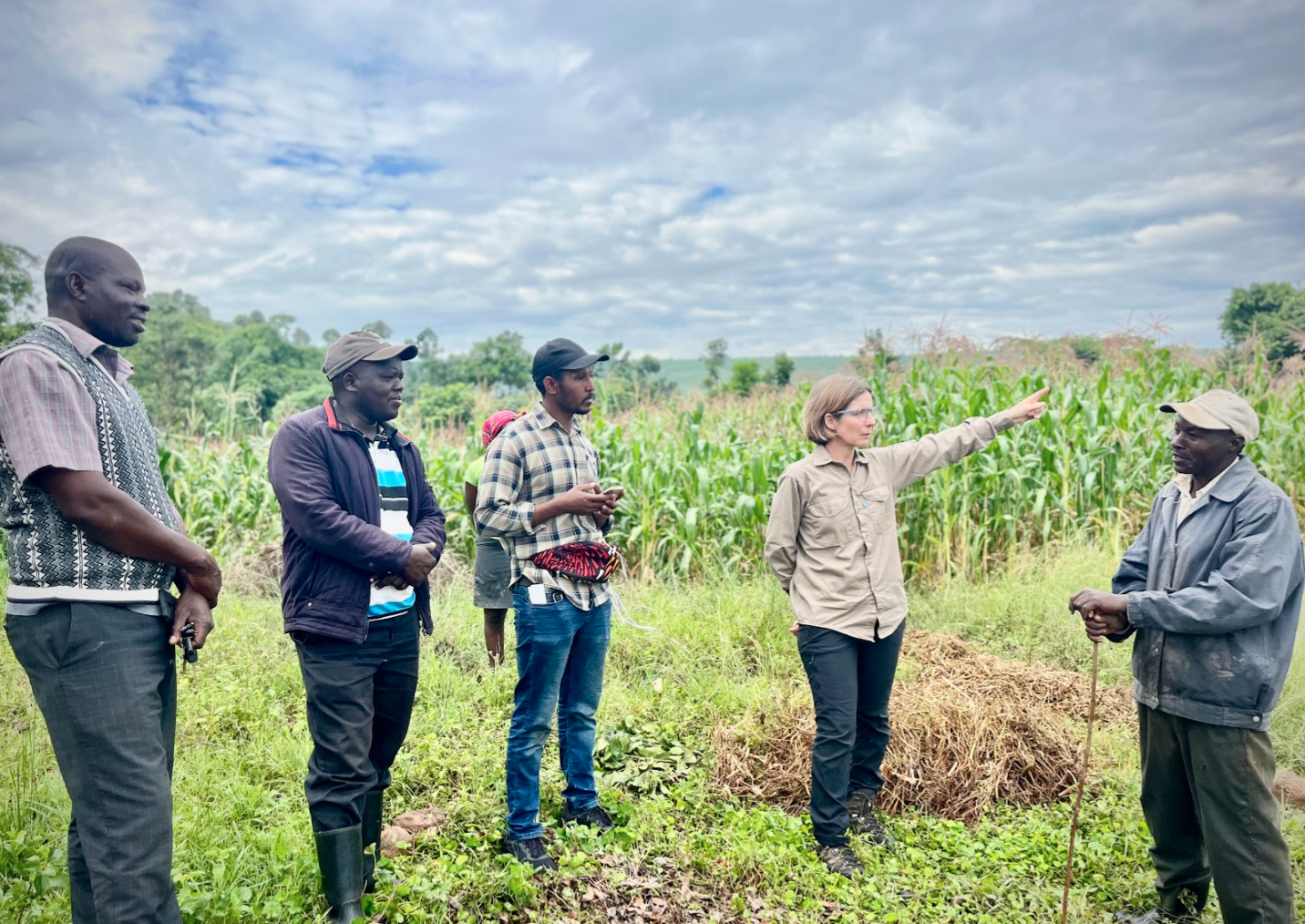
Rufino was a scientist at ILRI in 2010-2013 and saw a gap in lack of research on water and greenhouse gas emissions, spurring her raise attention to help start up ILRI’s Mazingira Centre. Through the Mazingira Centre, Rufino has spent many years in western Kenya on a water research project. She knows the area, has developed partnerships with community and Kabianga University members, and knows the soils to a great level of detail. Throughout her research, Rufino recognized the lack of soil health indicators specific for grasslands thus developed this project. She had visited 90 sites with former students that Sibilu has narrowed down to 20 for use in his project.
What’s the significance
‘There’s a lot of pressure on land to keep the same amount of animals while reducing pastureland, therefore we cannot afford to have degraded soils. Our research is validating methodology that the community can use to easily identify if their soils are becoming degraded,’ said Rufino.
The team hopes to create scientific evidence to validate a method that is affordable enough for the local community to re-measure their soil health every year. After all, soil cannot be restored if it is not recognised first as degraded. NGOs will then be able to distribute the method to communities that need it.





